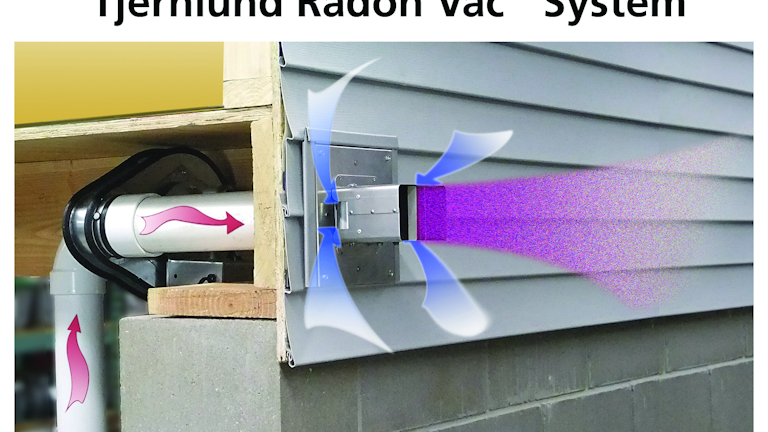Instead of having the fan and venting pipes on the outside of the home the only visible component on the outside is the vent stack that rises through the roof.
Radon fan in attic or outside.
If you ll be mounting the fan outside put it in a place where you can get electricity to it easily.
A fan is applying a vacuum under the membrane and the radon gas is collected and discharged outside.
Basement crawlspace slab on grade or hidden footings under the basement floor you will need more than one draw suction point and may need more than one type of radon reduction system.
Of clean size 4 6 gravel to very loose soil.
Schedule 40 pvc vent pipe using 3 in.
Benefits of a radon mitigation system installed in the attic the radon system is hidden.
First and foremost rather than having the fan and venting pipes on the outside of the home an interior system means that the only visible component on the outside is the vent stack that rises through the roof.
Electrical components are out of reach.
If the radon fan is located in the attic of the house or garage you can wrap the fan with fiberglass insulation.
Thought we had fixed the problem but again today i see water drops on outside of radon pipe.
This radon fan is designed for moderate to good air flow working most effectively with sub slab or sub material conditions ranging from about 4 in.
I have never found a radon fan more than a bit warm even if the motor has been stalled by some blockage so there appears to be no concern about causing a fire from the fan overheating.
Electrical components are out of reach.
So garages attics and on the outside of the house are the only acceptable locations for fan placement.
Radon fans are better protected from the elements.
Another way to define this is any where outside the conditioned air space of the heating and air conditioning system.
Radon fans and electrical components are out of reach.
This is required of a radon mitigation system as it protects you from a leak at the site of the fan which would result in a pooling of radon as the fan pulls radon up but then fails to expel it from the home.
In the attic in the garage or outside least preferred.
Combinations of the above depressurization systems are used in some homes.
Radon fans inside attic spaces are better protected from the freeze and thaw cycle.
We have a 4 radon pipe that goes from the basement straight up to roof vent passing through 1st floor 2nd floor and attic.
Radon systems create condensation within the suction and exhaust pipes.
So where should your radon fan be located.
In cold environments this condensation can freeze and effect the life of the radon vent fan.
Radon mitigation standards require that the fan to be placed outside of the living space of the home.
Frustrated not sure what to do and drywallers are scheduled to start tomorrow afternoon.
This makes it more inaccessible to children or animals to get at.
Never install the fan in your basement or any living space because if there s ever a leak the fan could pump highly concentrated radon right into your home.
If your home has a combination of foundation.
When a radon system is installed in the attic space the fan and all electrical components are also located in the attic.
If it s indoors the fan must be located in an unfinished attic.
This is new construction.
The air flowing through the fan will maintain the fan temperature.










